Related Research Articles

The Malankara Orthodox Syrian Church (MOSC) also known as the Indian Orthodox Church (IOC) or simply as the Malankara Church, is an autocephalous Oriental Orthodox church headquartered in Devalokam, near Kottayam, India. The church serves India's Saint Thomas Christian population. According to tradition, these communities originated in the missions of Thomas the Apostle in the 1st century. It employs the Malankara Rite, an Indian form of the West Syriac liturgical rite.

The Malankara Metropolitan or the Metropolitan of Malabar is an ecclesiastical title given to the head of the Malankara Syrian Church. It evolved from the title of the sixteenth century East Syriac metropolitans of India who were also styled the Metropolitan of Malabar. Since the division among the Saint Thomas Christians following the Synod of Diamper, the title has been mostly employed in association with the West Syriac branch of the community, usually known as the Malankara Church, among whom the office of the Malankara Metropolitan became the continuation of the local dynastic Archdeaconate.

Mathews Mar Athanasius (Mar Thoma XIII) (25 April 1818 – 16 July 1877) was the Malankara Metropolitan of the Malankara Church from 1852 until 1865. As a reformer, he spent most of his reign attempting to reform and heal rifts within the church. However in 1865, he was deposed by the traditionalist faction of the Malankara Church and Pulikkottil Joseph Dionysius became their leader.

The Malabar Independent Syrian Church (MISC) also known as the Thozhiyur Church, is a Christian church centred in Kerala, India. It is one of the churches of the Saint Thomas Christian community, which traces its origins to the evangelical activity of Thomas the Apostle in the 1st century.

Alexander Mar Thoma XIX Metropolitan was the Metropolitan of the Malankara Mar Thoma Syrian Church with its center in Kerala state in south-western India.
Mar Thoma I, also known as Valiya Mar Thoma and Arkkadiyakkon Thoma in Malayalam and Thomas de Campo in Portuguese was the first native-born, popularly-selected Metropolitan bishop of the 17th-century Malankara Church. He was the last Archdeacon of the undivided St. Thomas Christians of Malankara (Maliyankara).
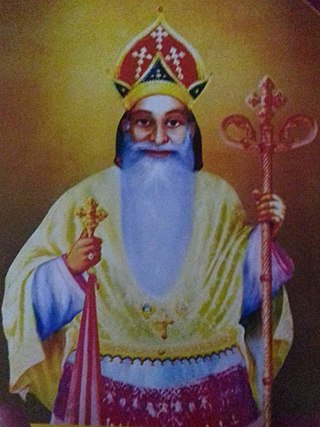
Mar Thoma III was the third metropolitan bishop who was the 3rd Metropolitan of the Malankara Church in India for a brief period from 1686 to 1688.
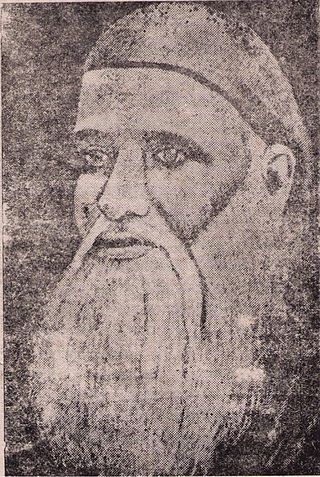
Palakunnathu Abraham Malpan, was an Indian cleric and theologian known for the Reformation movement within the Malankara Church during the 19th century. He was born in the ancient Syrian Christian Palakunnathu family which practiced West Syriac Rite Oriental Orthodoxy after the Coonan Cross Oath of 1653.

Abraham Mar Thoma XVII Metropolitan was the Metropolitan of the Malankara Mar Thoma Syrian Church from 1944 to 1947. He was called Maret Kochu Thirumeni by his people. Among the bishops of Malankara Churches Including Malankara Mar Thoma Syrian Church, Abraham Mar Thoma was the first to earn a Doctoral degree.

Titus II Mar Thoma Metropolitan (Mar Thoma XVI) (6 May 1866 – 6 July 1944) was the head of the Malankara Mar Thoma Syrian Church with its center in Kerala state in south-western India. He was known as Thithoos Dwitheeyan Mar Thoma Metropolitan among his people. (Thithoos is Aramaic and Malayalam)

Titus I Mar Thoma Metropolitan (Mar Thoma XV) (20 February 1843 – 20 October 1909) was known as Thithoos Mar Thoma Metropolitan (Thithoos is Aramaic and Malayalam) was the second Mar Thoma Metropolitan (1893–1909) after the Malankara Church split as the Orthodox and reformist factions.
Mar Thoma VI, also known as Mar Dionysius I, was the 6th Metropolitan of the Malankara Syrian Church, serving from 1765 until his demise on 8 April 1808. His original name was Iype, and he was born as the only son of Mathew (Mathan) Tharakan, the elder brother of Mar Thoma V, in the Pallippuram branch of the Pakalomattom Family(Andoor, Marangattupilly).
Mar Thoma VII was a Bishop of the Malankara Church from 1796 and the 7th Malankara Metropolitan from April 1808 to July 1809. Born in Pakalomattom family in Kurichithanam, Pala, he was well known as an efficient administrator, deeply religious but was a quiet and reserved person. During his time, a difficult period in the history of Travancore State, the church was able to help Travancore government by depositing an amount as fixed deposit, which came to be known as Vattipanam.
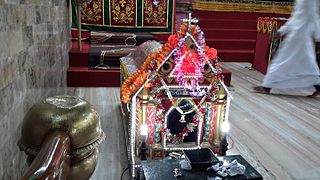
Mar Thoma IX was the ninth Metropolitan of the Malankara Church in Kerala, India for a brief period in 1816. That year, he was consecrated Metropolitan by Mar Thoma VIII, but soon after his ordination he was dethroned by Pulikkottil Joseph who was appointed by the then British resident Colonel John Munroe.
Mar Thoma VIII was the 8th Metropolitan of the Malankara Church in Kerala, India from 1809 to 1816. He was a man of vision. It was during his time Malankara church opened the first formal educational institution, in Kerala. With the opening of Kottayam Suryani Seminary, modern education dawned in Kerala.
Mar Dionysius II, born Pulikkottil Joseph Ittoop was 10th Malankara Metropolitan for nine months until his death on 24 November 1816. He dethroned Mar Thoma IX and succeeded him by the favour of Col.John Munroe, then British Resident of Travancore. Despite the brevity of his reign he made lasting contributions to the Malankara Orthodox Syrian Church.
Mar Thoma IV was the 4th Malankara Metropolitan of the Malankara Church in India, serving from 1688–1728. During his tenure, the church was subject to a number of persecutions.
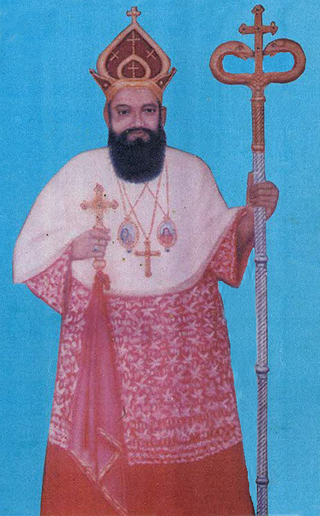
Mar Dionysius III, also known as Punnathra Mar Dionysius and born Kurien was 11th Malankara Metropolitan and Successor to the Holy Apostolic Throne of St.Thomas from 1817 until his death. Dionysius had a long career in the Malankara Church prior to his consecration as Metropolitan. It was his suggestion during the time of Mar Thoma IX to establish the Syrian seminary at Kottayam, Kerala's first educational institution. He also welcomed some of the first missionary teachers who arrived from England to teach in the seminary. In 1816, following the demise of Mar Dionysius II, who had not appointed a successor, Kurien was elected to succeed him as the Malankara Metropolitan by the general assembly of the Church and was ordained as bishop by Geevarghese Mar Philexenos II of the Malabar Independent Syrian Church.
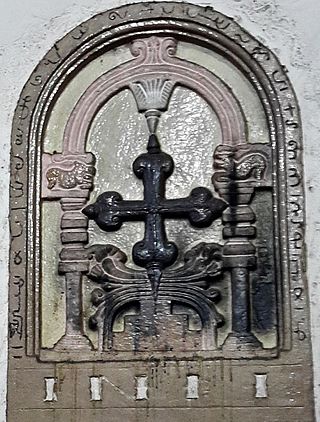
The Saint Thomas Christian denominations are Christian denominations from Kerala, India, which traditionally trace their ultimate origins to the evangelistic activity of Thomas the Apostle in the 1st century. They are also known as "Nasranis" as well. The Syriac term "Nasrani" is still used by St. Thomas Christians in Kerala. It is part of the Eastern Christianity institution.
References
- ↑ "Historical Divisions of Mar Thoma Nasranis". www.nasrani.org. Retrieved 14 February 2024.
- ↑ Varier, Raghava. Varappuzha Reghakal, Letter of Bishop Florence to Travancore King about Pallipurathu Thomman Mapila(Marthoma 5) [വരാപ്പുഴ രേഖകൾ, രാഘവവാരിയർ]. Sukapuram; Vallathol Vidyapeetham. pp. Letter of Bishop Florence to Travancore King.
- ↑ Podimattam, John (1975). കേരളാ സുറിയാനി സഭാചരിതസംഗ്രഹം [Kerala Suriyani Sabhacharithasamgraham.] (in Malayalam) (Revised ed.). Kottayam: Pakalomattam-Pallipuram Kudumbayogam. pp. അവതാരിക, ഉപോല്ഘാതം, ആമുഖപഠനം.
- ↑ "Bishops". Pakalomattom Family. Archived from the original on 3 October 2023. Retrieved 13 February 2024.
- ↑ Official Website, Pakalomattam Family. "പകലോമറ്റം കുടുംബ ചരിത്രം" (PDF). pakalomattamfamily.org.
- ↑ Official Website, Pakalomattam Family. "Pakalomattam Branches". Pakalomattom Family. Retrieved 13 February 2024.
- ↑ "Bishops". Pakalomattom Family. Archived from the original on 3 October 2023. Retrieved 13 February 2024.
- ↑ Five of the Malayalam versions were available in 1952.
- ↑ Daniel, K. N. Canons of the Synod of Diamper, prepared using five of the available Malayalam versions.
- ↑ Antonio de Gouvea (1606). Jornada do Arcebispo Aleixo de Menezes quando foy as Serra do Malaubar.
- ↑ Ittoop Writer, '’Malayalathulla Suryani Chistianikauleday Charitram'’. (History of Syrian Christians in the land of Malayalam). Page 148.
- ↑ Kochumon, M. P. (1995). Parisuddha Kattumangattu Bavamar. (Saintly bishops of Kattumangattu). Page 8.
- ↑ Varghese Kassessa, K. C. Malabar Swathantra Suyani Sabha Charitram. (History of Malabar Independent Syrian Church). Page 26.
- ↑ This agreement was the evidence No. 27 in the Seminary case. Pulikottil Dionysius Vs Thomas Athanasius 1879–1889
- ↑ "Bishops". Pakalomattom Family. Retrieved 14 February 2024.